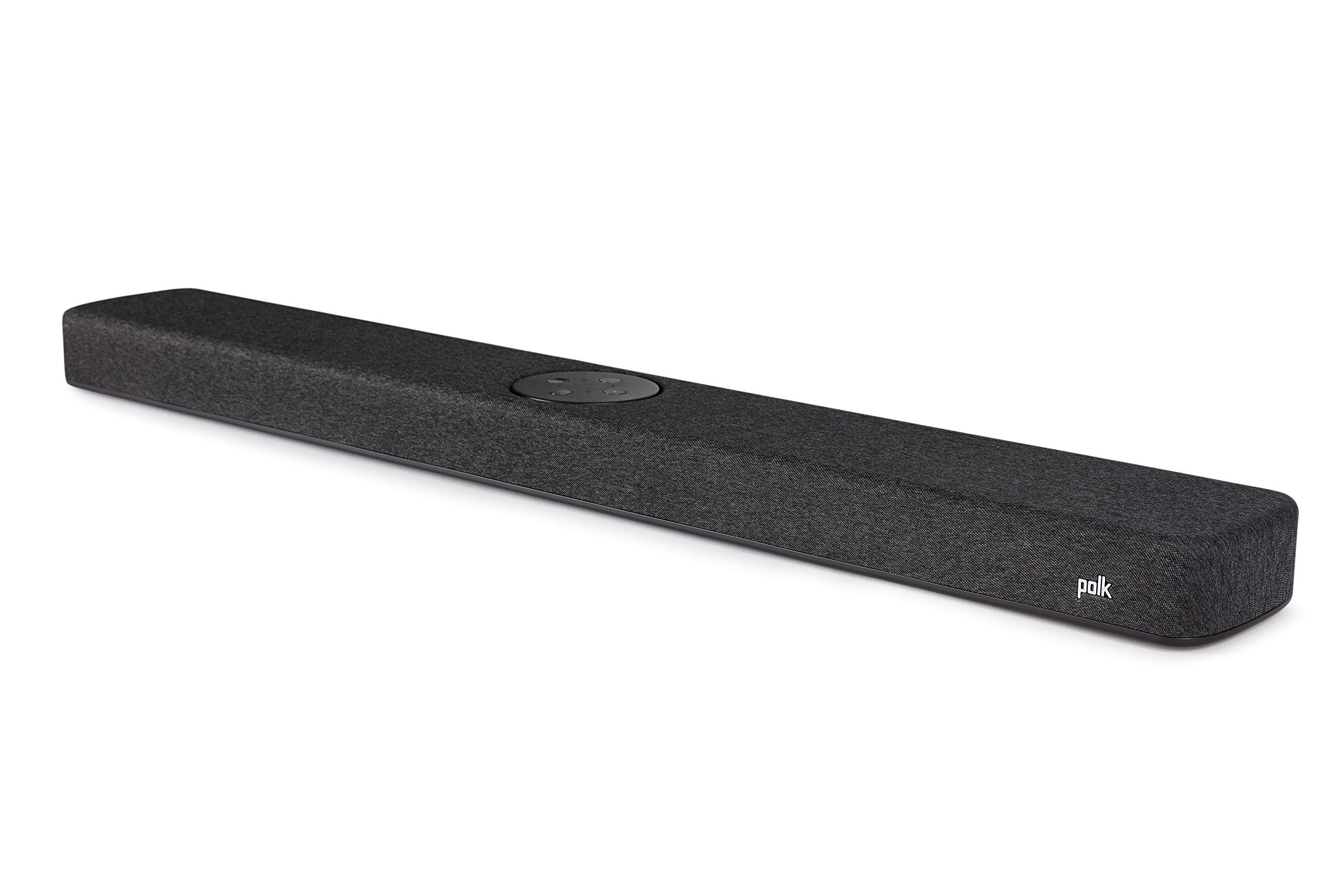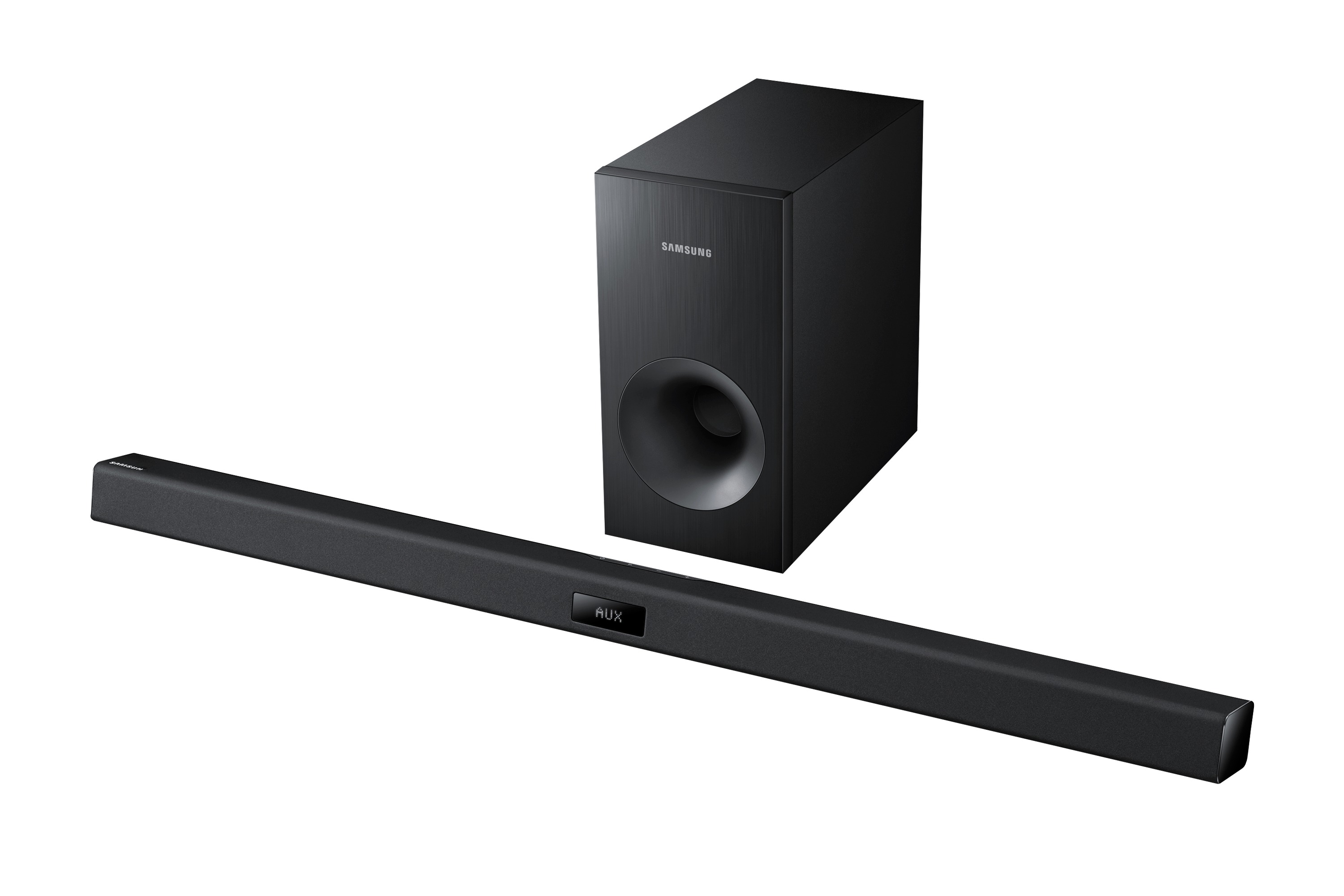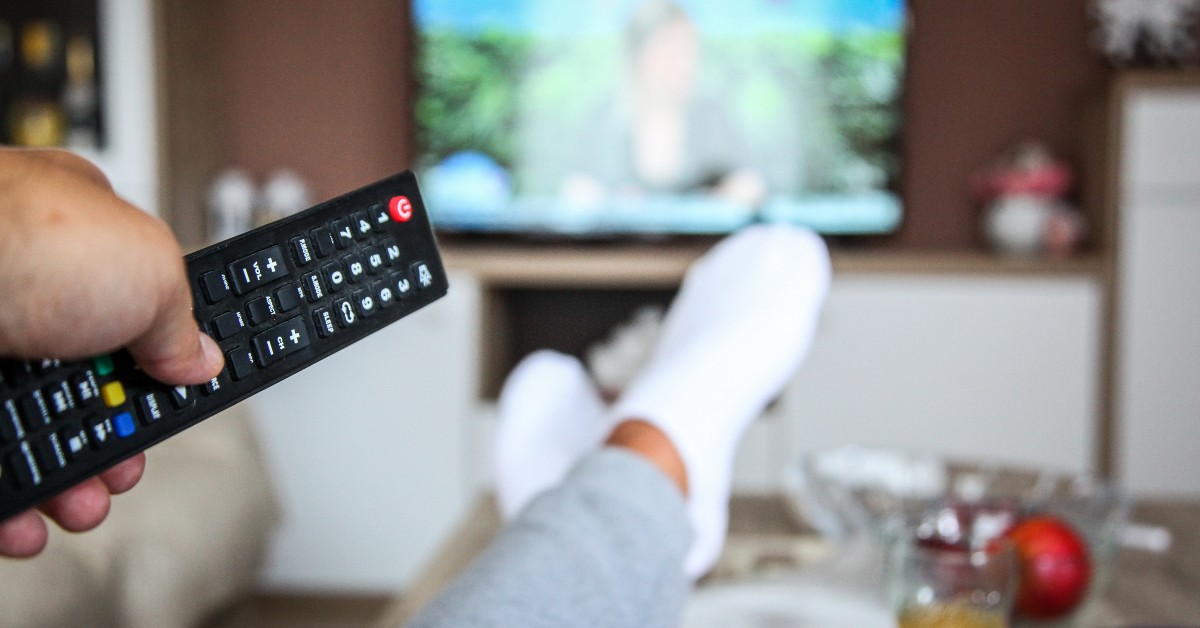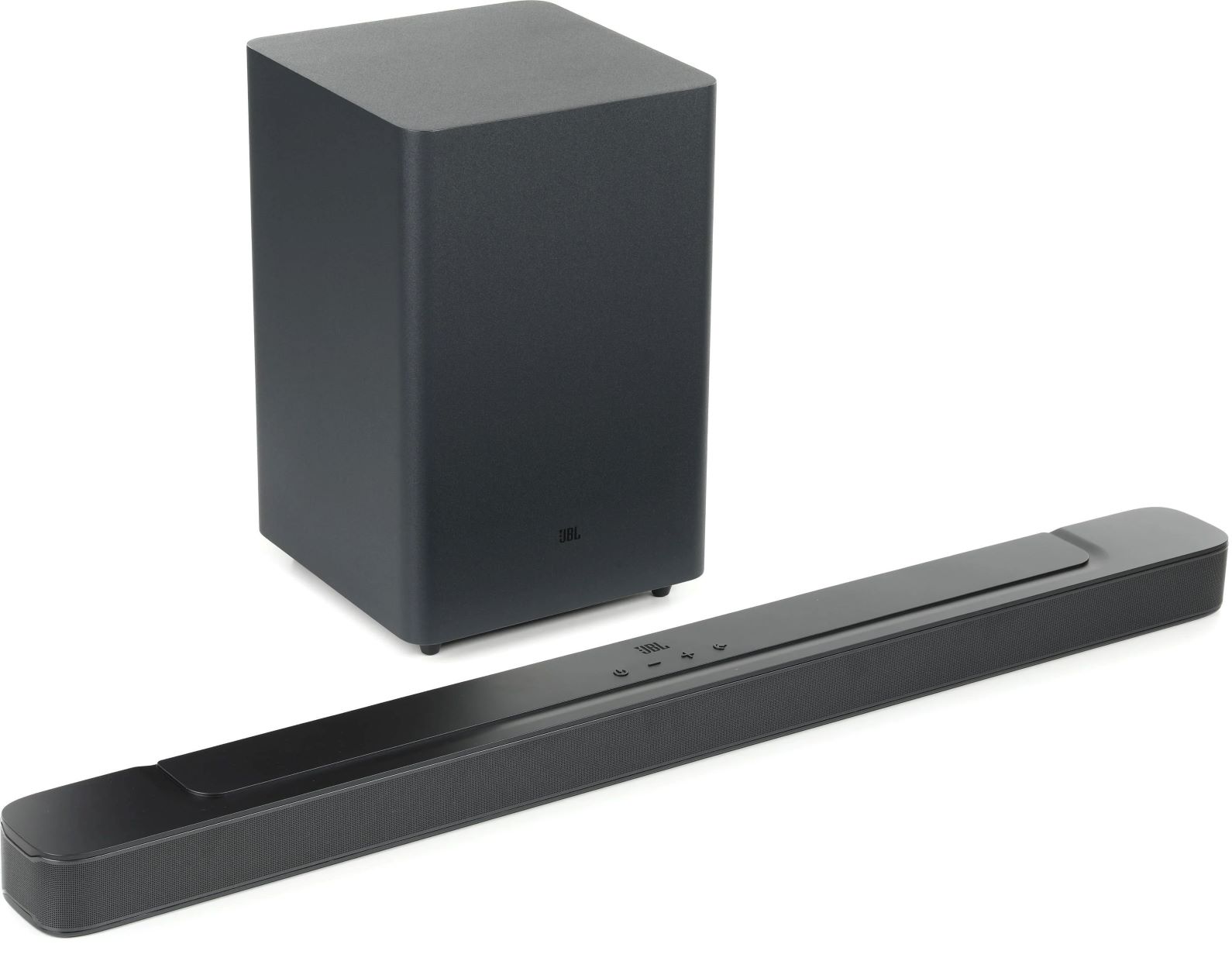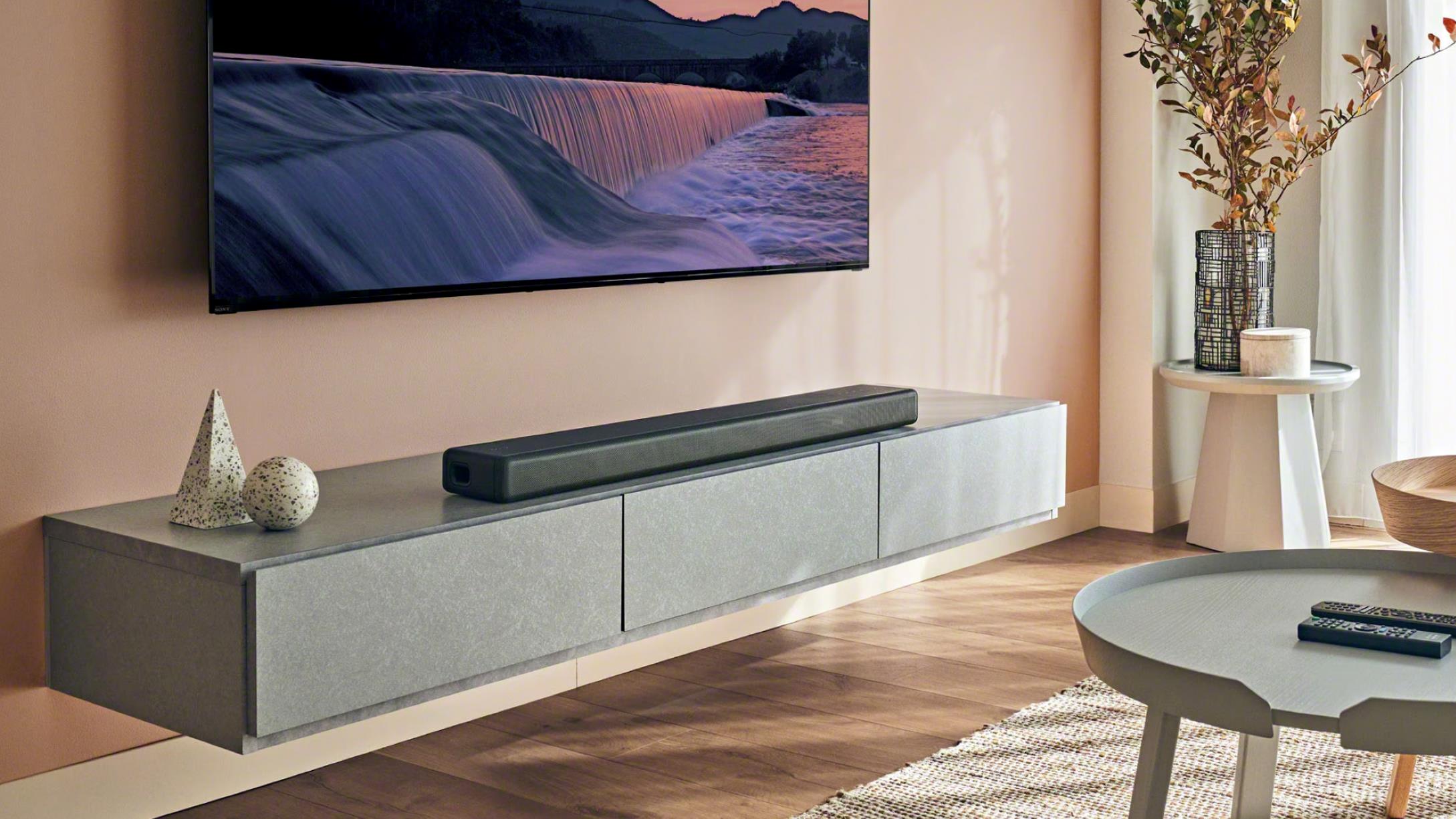Home>Devices & Equipment>Subwoofer>How To Connect Samsung Soundbar To Subwoofer Without Remote
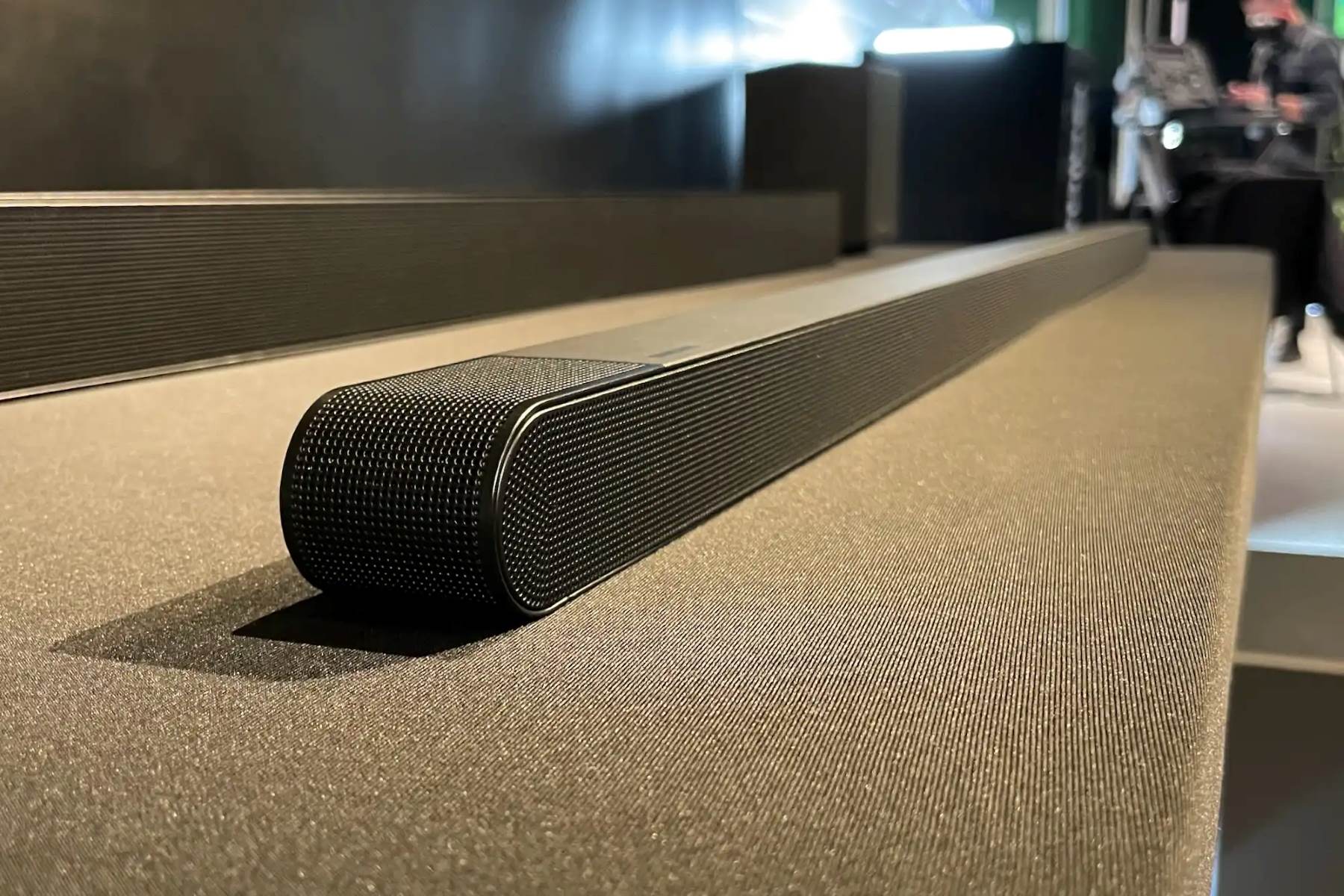

Subwoofer
How To Connect Samsung Soundbar To Subwoofer Without Remote
Published: January 22, 2024
Learn how to connect your Samsung soundbar to the subwoofer without a remote control. Follow these simple steps to enhance your audio experience.
(Many of the links in this article redirect to a specific reviewed product. Your purchase of these products through affiliate links helps to generate commission for AudioLover.com, at no extra cost. Learn more)
Table of Contents
Introduction
When it comes to creating an immersive audio experience, subwoofers are a must-have component. These specialized speakers reproduce low-frequency sounds, adding depth and impact to your favorite movies, music, and games. If you own a Samsung soundbar and want to take your listening experience to the next level, connecting a subwoofer can make a world of difference.
However, what happens when you find yourself without a remote control to connect your Samsung soundbar to a subwoofer? Don’t worry! In this article, we will explore different methods to help you connect your Samsung soundbar to a subwoofer without a remote.
Before we dive into the steps, it’s important to note that not all Samsung soundbars are compatible with subwoofers. Make sure to check the specifications and compatibility of your soundbar model before attempting to connect a subwoofer. This will save you time and frustration in the process.
In the following sections, we will first discuss how to check the compatibility of your Samsung soundbar and subwoofer. Then, we will explore methods for connecting the soundbar and subwoofer without a remote control, as well as using a universal remote as an alternative solution. Additionally, we will provide some troubleshooting tips to help you overcome any potential challenges that may arise during the process.
Without further ado, let’s get started on connecting your Samsung soundbar to a subwoofer without a remote control.
Checking the Compatibility of Samsung Soundbar and Subwoofer
Before attempting to connect your Samsung soundbar to a subwoofer, it’s important to ensure that they are compatible with each other. Not all soundbars and subwoofers are designed to work together seamlessly, so verifying compatibility is crucial for a successful connection.
To check the compatibility, start by identifying the model numbers of both your Samsung soundbar and subwoofer. You can usually find these model numbers on the back or bottom of each device, or in the product manual.
Once you have the model numbers, visit the official Samsung website or refer to the product documentation to confirm whether the soundbar and subwoofer are compatible. Look for information about supported subwoofer models or connectivity options.
If the soundbar and subwoofer are a compatible pairing, you’re ready to proceed with the connection process. However, if they are not compatible, it’s advised to either consider purchasing a compatible subwoofer or explore alternative options to enhance your audio experience.
Keep in mind that using a non-compatible subwoofer may result in limited functionality or sound quality issues. It’s always best to use a subwoofer that is specifically designed and recommended for your Samsung soundbar.
By ensuring compatibility between your Samsung soundbar and subwoofer, you make way for a smooth and enjoyable audio experience that brings your favorite movies, music, and games to life with deep, powerful bass.
Resetting the Soundbar and Subwoofer
If you’re having trouble connecting your Samsung soundbar to a subwoofer without a remote, a simple solution is to reset both devices. Resetting the soundbar and subwoofer can help to clear any previous settings or configurations that might be causing connectivity issues.
Here are the steps to reset your Samsung soundbar and subwoofer:
- Power off both the soundbar and subwoofer.
- Unplug them from the power source.
- Wait for a few minutes to ensure all residual power is discharged.
- Plug both the soundbar and subwoofer back into the power source.
- Power on both devices.
After performing the reset, attempt to connect the soundbar and subwoofer again. By resetting the devices, you create a fresh starting point for the connection process, increasing the likelihood of a successful pairing.
It’s important to note that the steps to reset your Samsung soundbar and subwoofer may vary depending on the specific models and their respective interfaces. Refer to the user manuals or online documentation provided by Samsung for detailed instructions on resetting your devices.
If resetting the devices doesn’t resolve the connectivity issues, don’t worry. There are alternative methods you can try to connect your Samsung soundbar to a subwoofer without a remote, which we will explore in the following sections.
Now that you have reset your soundbar and subwoofer, let’s move on to the next steps to connect them without a remote or with the help of a universal remote.
Connecting Samsung Soundbar to Subwoofer without Remote
If you find yourself without a remote control to connect your Samsung soundbar to a subwoofer, don’t worry! There are alternative methods you can try to establish a connection. Here are a few options:
- Using Soundbar Controls: Some Samsung soundbars have a built-in control panel on the device itself. Check if your soundbar has buttons or touch-sensitive controls for navigating the settings menu. With these controls, you can access the soundbar’s menu and navigate to the subwoofer settings. From there, you can initiate the pairing process without needing a remote control. Reference the user manual or online documentation for specific instructions on accessing the subwoofer settings.
- Using a Mobile App: Samsung provides a SmartThings app that allows you to control various Samsung devices, including soundbars. Check if your soundbar is compatible with the SmartThings app and download it onto your mobile device. Once installed, follow the app’s instructions to connect and control your soundbar. Some soundbars have the option to pair a subwoofer through the app, allowing you to establish a connection without the need for a physical remote.
- Alternative Connectivity Options: Depending on the model of your Samsung soundbar and subwoofer, there may be alternative connectivity options available. Look for auxiliary input ports such as HDMI, optical, or analog connections on both devices. If available, you can try using these ports to establish a connection between the soundbar and subwoofer. Refer to the user manual or online documentation for specific instructions on connecting the devices using alternative methods.
It’s important to note that the availability of these methods may vary depending on the specific model of your Samsung soundbar and subwoofer. Additionally, the interface and menu options may differ between different soundbar models. Refer to the user manual or online documentation for accurate instructions on connecting your specific devices.
By exploring these alternative methods, you can connect your Samsung soundbar to a subwoofer even without a remote control, ensuring a rich and immersive audio experience.
Using a Universal Remote to Connect the Soundbar and Subwoofer
If you don’t have the original remote control for your Samsung soundbar, using a universal remote can be a convenient alternative. A universal remote allows you to control multiple devices, including your soundbar and subwoofer, using a single remote. Here’s how you can use a universal remote to connect your soundbar and subwoofer:
- Check Compatibility: Ensure that your universal remote is compatible with both your Samsung soundbar and subwoofer. Universal remotes typically come with a list of supported brands and models. Confirm that your devices are on the compatibility list.
- Program the Remote: Follow the instructions provided with your universal remote to program it for use with your Samsung soundbar. This usually involves entering a code or using an automatic scanning feature to identify the correct code for your specific model. Refer to the universal remote’s user manual for detailed programming instructions.
- Pairing the Subwoofer: Once you have successfully programmed the universal remote to control your soundbar, you can proceed to pair the subwoofer. Access the soundbar’s settings menu using the universal remote and navigate to the subwoofer pairing option. Follow the on-screen instructions to initiate the pairing process between the soundbar and subwoofer.
- Testing the Connection: After the pairing process is complete, test the connection between the soundbar and subwoofer by playing audio through your sound system. Adjust the volume and bass settings to ensure that the subwoofer is producing sound and functioning as expected.
Using a universal remote is a convenient solution when you don’t have the original remote control for your Samsung soundbar. It allows you to control multiple devices, including your soundbar and subwoofer, with ease.
Remember, the steps for programming and pairing may vary depending on the specific universal remote model you have. Refer to the user manual or online documentation provided with your universal remote for accurate instructions based on your device.
By using a universal remote, you can effortlessly connect your Samsung soundbar to a subwoofer and enjoy a heightened audio experience.
Troubleshooting Tips
While connecting a Samsung soundbar to a subwoofer without a remote control can be a straightforward process, it’s not uncommon to encounter certain issues along the way. Here are some troubleshooting tips to help you overcome any challenges that may arise:
- Check Power Connections: Ensure that both the soundbar and subwoofer are properly connected to a power source. Double-check the power cables and make sure they are securely plugged in.
- Verify Compatibility: If you’re experiencing difficulties with the connection, confirm that your soundbar and subwoofer are compatible with each other. Refer to the user manuals or online documentation to check for any specific compatibility requirements or restrictions.
- Reset the Devices: As mentioned earlier, resetting the soundbar and subwoofer can often resolve connection issues. Follow the steps outlined in the “Resetting the Soundbar and Subwoofer” section of this article to perform a reset.
- Update Firmware: Check if there are any available firmware updates for your soundbar and subwoofer. Firmware updates can sometimes address connectivity issues and improve overall performance. Visit the official Samsung website or use the manufacturer’s app to check for updates and follow the instructions to install them.
- Ensure Proper Placement: The placement of your subwoofer can affect its performance and connectivity. Make sure the subwoofer is positioned relatively close to the soundbar, within the recommended range specified in the user manual. Avoid placing the subwoofer near other electronic devices that may cause interference.
- Reposition the Subwoofer: If you’re still experiencing issues, try repositioning the subwoofer within the room. Sometimes, moving it to a different location can improve the wireless signal strength and connectivity.
- Factory Reset: If all else fails, you can perform a factory reset on both the soundbar and subwoofer. Be aware that this will erase any customized settings and return the devices to their original factory settings. Refer to the user manuals or online documentation for instructions on how to perform a factory reset.
If you have tried all these troubleshooting tips and are still unable to establish a connection between your Samsung soundbar and subwoofer, it may be beneficial to contact Samsung support or seek assistance from a professional technician for further guidance.
Remember, patience and persistence are key when troubleshooting connectivity issues. With some troubleshooting and experimentation, you’ll likely find a solution that allows you to successfully connect your soundbar and subwoofer.
Conclusion
Connecting your Samsung soundbar to a subwoofer without a remote control is possible with the right steps and techniques. In this article, we explored different methods for establishing a connection and enhancing your audio experience.
First and foremost, it’s important to check the compatibility of your Samsung soundbar and subwoofer. Ensuring they are designed to work together will prevent any compatibility issues down the line.
If you don’t have a remote control, you can try using the soundbar’s built-in controls or a mobile app like SmartThings to navigate the settings and connect the subwoofer. These options provide flexibility and convenience for achieving a successful connection.
Alternatively, using a universal remote is another effective approach. By programming the universal remote to control your soundbar, you can then proceed to pair the subwoofer and customize the settings according to your preferences.
Throughout the process, it’s important to follow troubleshooting tips such as checking power connections, resetting the devices, and updating firmware. These steps can often resolve common connection issues and improve overall performance.
If you encounter persistent difficulties or have exhausted all troubleshooting options, don’t hesitate to seek assistance from Samsung support or a professional technician. They can provide further guidance and help ensure a seamless connection between your soundbar and subwoofer.
Remember, a subwoofer adds depth and impact to your audio, enriching the overall sound quality and ultimately enhancing your entertainment experience. By successfully connecting your Samsung soundbar to a subwoofer, you can immerse yourself in vibrant, powerful bass while enjoying your favorite movies, music, and games.
Now that you have a comprehensive understanding of how to connect your Samsung soundbar to a subwoofer without a remote control, it’s time to put these methods into practice and elevate your audio experience to new heights.



